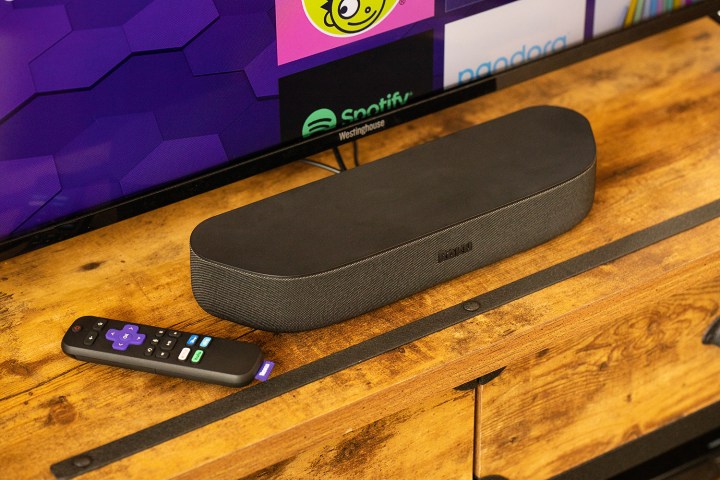When you go off to college, you probably have a long checklist of things you’d like for your perfect dorm room. Right at the top: TV and sound system. Unfortunately, the average college dorm room isn’t exactly spacious. Most college students have to learn to be efficient with their space, often using their laptops or desktop computers as an all-in-one study/entertainment hub. This is where a multi-function device like the Roku Streambar can up your dorm game substantially.
Launched last year, the Roku Streambar is a capable, compact speaker that can provide the soundtrack for parties, but it’s also a
It’s small
The Streambar isn’t Roku’s first speaker/player 2-in-1 — the Roku Smart Soundbar came first. But while being a 2-in-1 is a big reason the Streambar is so compelling (we’ll get to that shortly), to appeal to the audience of compact-living minimalists, it first has to pass the litmus test of being small.
If you’re living in a studio apartment or a tiny dorm room, a typical soundbar is not going to fit on your desk. The Streambar is not your typical soundbar, however. It’s only 14 inches long and 2.4 inches tall. That’s downright tiny, and will absolutely fit on even the smallest desks, nestled cleanly right below a computer monitor. Even if you upgrade to the Streambar Pro, that’s only 32.2 inches long and 2.8 inches tall.
A better viewing experience
If you’re using your PC to stream your favorite shows and movies, you know it’s only good if you’re sitting at your desk. If you decide to rotate your monitor to face the bed or sit down on a couch across the room, navigating the experience with a mouse becomes tedious.
There is no replacement for a good remote, and Roku’s remote and interface are among the best. Rather than settling for the subpar browser-based viewing experience that those who stream from their desktops often deal with, the

The Streambar isn’t going to give the highest level of viewing experience
We’re not sure we could convince someone who has been streaming from their desktop that the
Better than stock speakers
While there are a lot of good speaker options out there, audiophile-level audio isn’t at the top of everyone’s list — especially if you’re a student on a budget. For most,
All the
Better yet, it’s not just a TV speaker. It can be your computer speaker and music player, too. For some, it can even be a gaming soundbar.

Multifunctional
The
For most people going back to school, the HDMI input to their monitor and the connection to sound via Bluetooth to their computer would satisfy all needs. Most
While Bluetooth is plenty for music or YouTube videos, it will have far too much latency to be appealing for many videogames. If your computer happens to support a digital optical connection, though, you’re in business. The Streambar would work great for gaming.
It still remains to be seen how PC gamers respond to suddenly having the option to buy a soundbar specifically for gaming, but manufacturers seem to think the idea is going to take off. And while the
It’s cheap
I think the most compelling reason the







